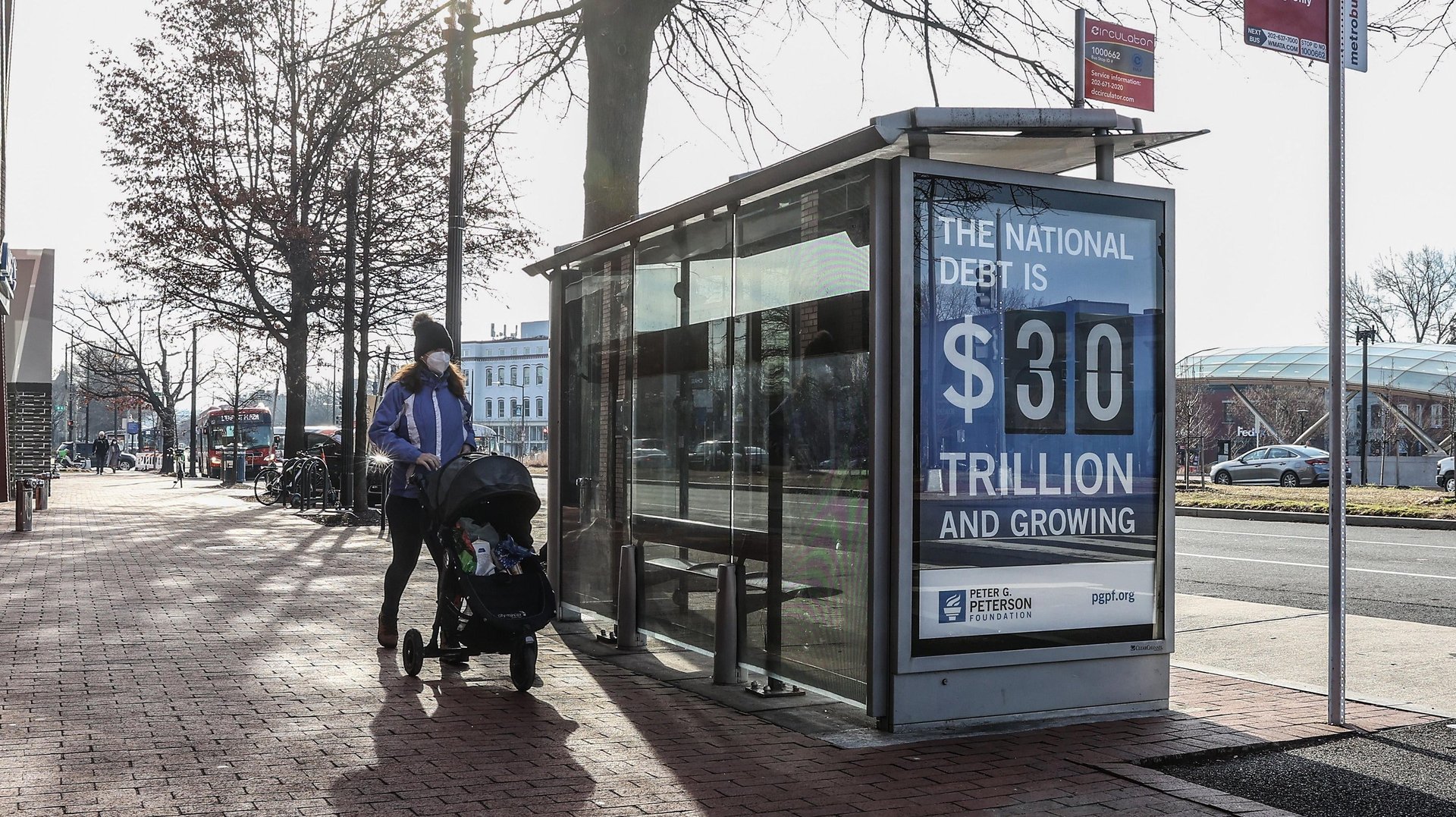America’s record public debt is about to hit the ceiling
At $31.1 trillion, outstanding public debt is getting closer to the $31.4 trillion debt ceiling Congress imposed until early 2023.

America’s debt problem has reached a critical point.
Public debt outstanding in the US has surpassed $31 trillion for the first time ever, Treasury department data published Tuesday (Oct. 4) show. A trillion dollars of debt was added just in the last eight months, and it’s close to reaching the $31.4 trillion debt ceiling Congress imposed on borrowing until early 2023.
Much of the extreme borrowing began when the country was in the grips of the covid-19 pandemic, and close-to-zero interest rates made taking on debt seem cheap. But even as president Joe Biden declared the pandemic “over,” the borrowing hasn’t ended, and it’s only becoming more expensive as interest rates rise.
“Excessive borrowing will lead to continued inflationary pressures, drive the national debt to a new record as soon as 2030, and triple federal interest payments over the next decade–or even sooner if interest rates go up faster or by more than expected,” warns the Committee for a Responsible Fiscal Budget (CRFB), a non-partisan non-profit organization devoted to educating policymakers and citizens about the country’s fiscal challenges.
America’s growing public debt crisis
By the digits
108%: US debt-to-GDP ratio
$3.4 trillion: additional debt policymakers “appropriately enacted” in 2020 for covid relief, according to CRFB
$4.8 trillion: estimated new deficits the Biden administration has added between 2021 and 2031, as per CRFB. The largest chunk is the $1.85 trillion American Rescue Plan, which included funding to state and local governments, $1,400 payments to individuals, an extension of expanded unemployment benefits, new money to combat the pandemic, and other spending.
$700 billion: net federal interest payments for the legislative and executive actions by Biden, included in the $4.8 trillion
$240 billion: deficit reduction through 2031 by the Inflation Reduction Act, which promoted spending and tax credits for energy and climate as well as new health spending. It was more than offset through tax increases, improved tax enforcement, and prescription drug savings
2: Calvin Coolidge and Warren G. Harding are the only presidents since 1901 who didn’t add to the national debt
Quotable
“As the end of the year approaches, it is time to remind policymakers that whether to grow the national debt further is within their control. At the very least, they should commit to no further borrowing in 2022—it cannot be too much to ask that they practice paying for their priorities by abstaining from any new borrowing for just three months. The $31 trillion in debt is a staggering number that should keep them up at night.” —Maya MacGuineas, President of the CRFB
How can the US shrink debt?
✂️ Cut spending
🫰 Raise taxes
🚀 Increase GDP faster
🔀 Shift spending from defense to job-creation areas like infrastructure and education
A fearful fact
Interest payments could surpass defense expenditure by 2029 if interest rates on the nation’s debt increase by just one percentage point beyond what the Congressional Budget Office forecasts over the next few years.
Related stories
💸 No, the US doesn’t have $30 trillion in debt